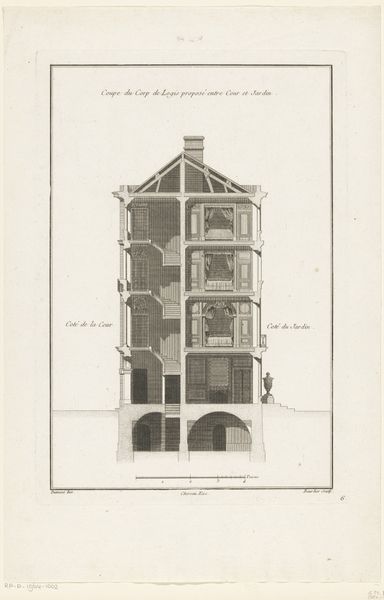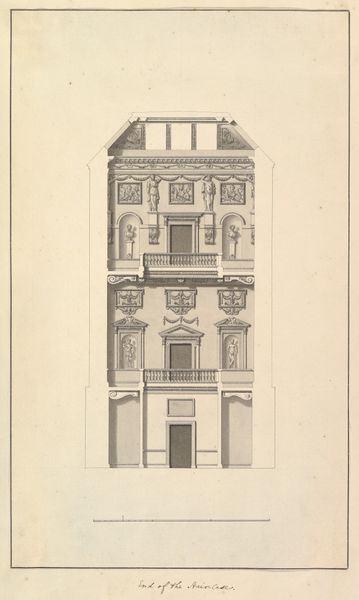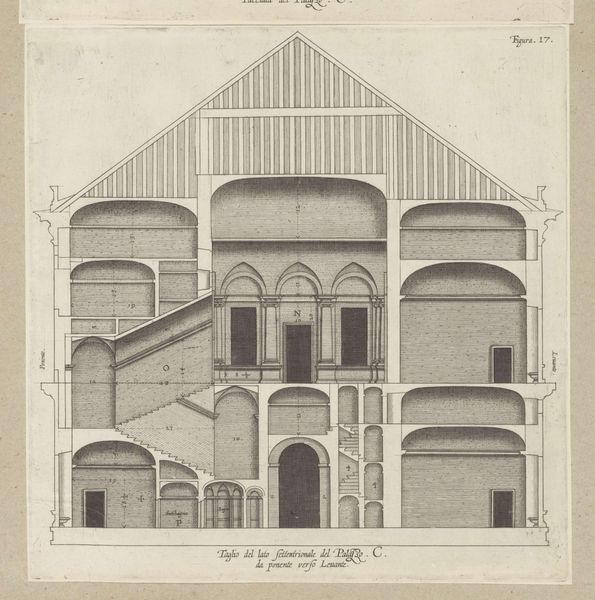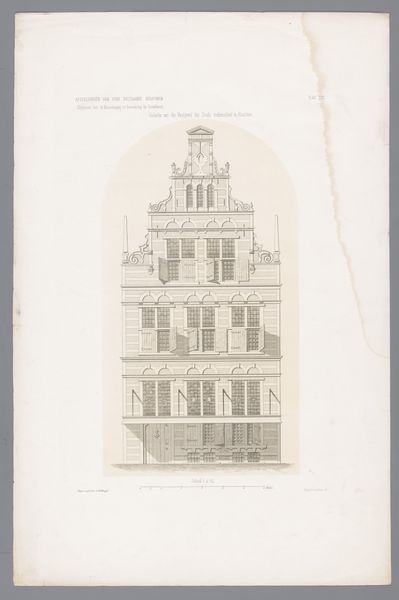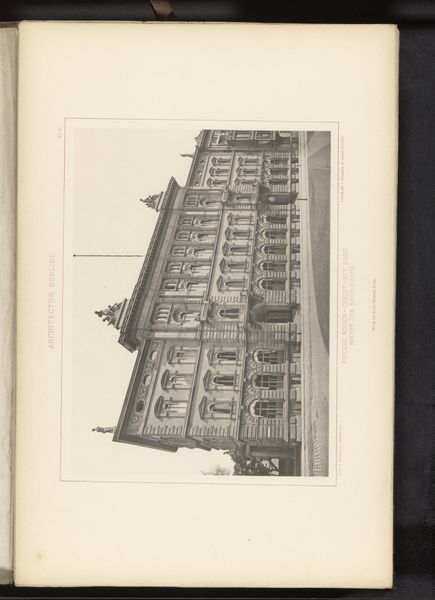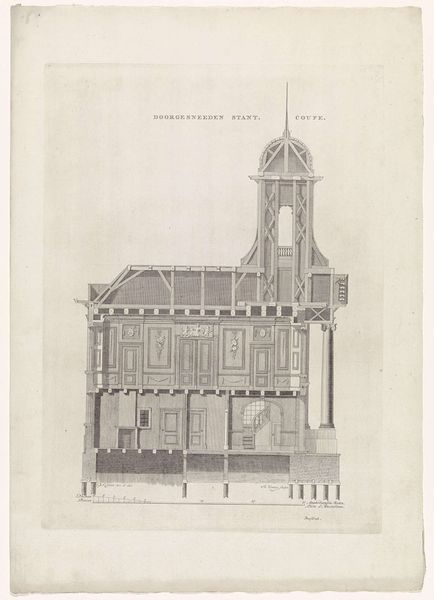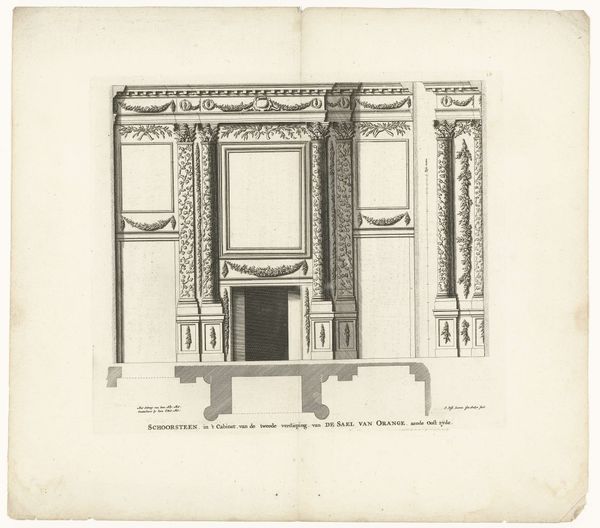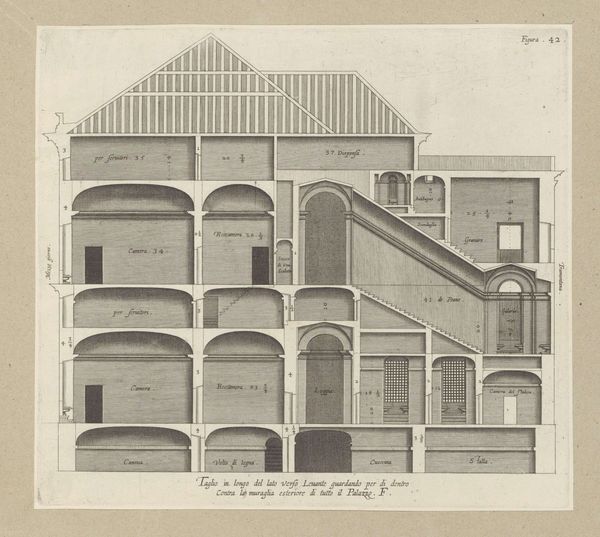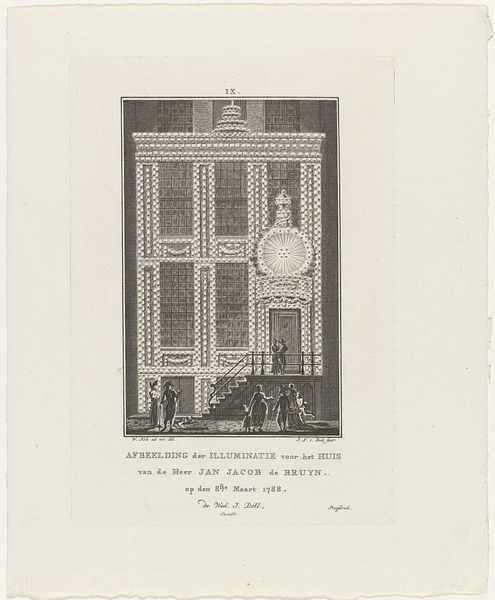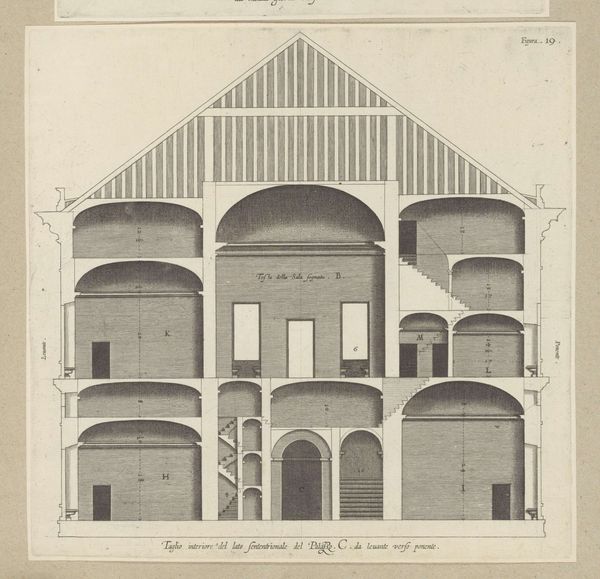
drawing, print, ink, engraving, architecture
#
drawing
#
ink paper printed
# print
#
light coloured
#
old engraving style
#
ink
#
cityscape
#
engraving
#
architecture
Dimensions: height 547 mm, width 413 mm
Copyright: Rijks Museum: Open Domain
Editor: This print, "Doorsnede van Felix Meritis te Amsterdam," dating from around 1790, by Noach van der Meer the younger, offers a meticulous cross-section of the building. I find it strikingly precise and austere in its presentation. What historical echoes do you hear in this image? Curator: The precision you note *is* telling. Consider what the Felix Meritis building represented: Enlightenment ideals. This print isn't just an architectural diagram; it's a visual symbol of rationalism, scientific inquiry, and civic virtue. See how the windows, aligned with perfect symmetry, almost serve as eyes? What do they suggest? Editor: Perhaps a desire for clarity, for seeing and understanding the world? Each window a portal of knowledge? Curator: Precisely. The cross-section allows us to see the inner workings, revealing the organizational structure, reflecting Enlightenment's quest to dissect and understand. Notice the scale—how the people within the illustration are rendered, practically disappearing? What does that visual choice communicate about individuals and society at the time? Editor: Maybe how individuals are subordinate to larger societal structures and intellectual pursuits happening within? Curator: Exactly. It prompts questions: Did this ideal of rationality truly serve everyone, or did it obscure other perspectives? Consider how architectural prints became accessible, influencing civic buildings in revolutionary America, or becoming instruments of colonial ambition in urban designs worldwide. How do we unpack the deeper social scripts within the structure? Editor: It's amazing how much the image reveals when you start looking at it as a collection of symbols representing historical perspectives. Curator: Indeed! Every line, every carefully rendered detail speaks volumes. Seeing it as more than just an image, opens discussions about ambition and representation.
Comments
No comments
Be the first to comment and join the conversation on the ultimate creative platform.
